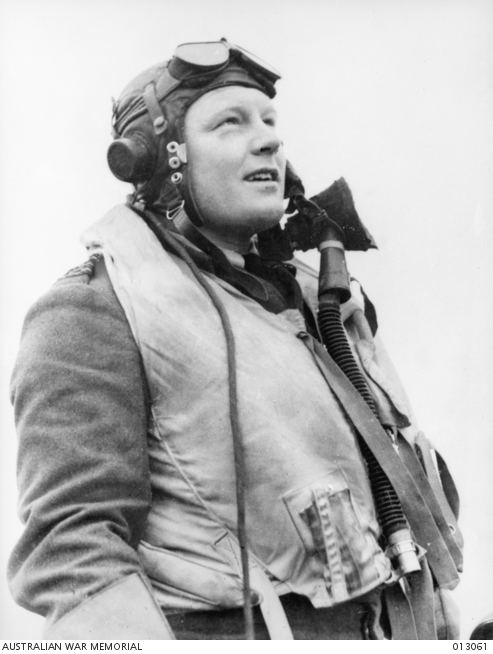Nickname(s) "Bluey" Name Keith Truscott | Years of service 1940–1943 Allegiance Australia Rank Squadron leader | |
 | ||
Commands held No. 76 Squadron (1942–43) Died March 28, 1943, Exmouth, Australia Unit No. 452 Squadron RAAF (1941–1942) Battles and wars European theatre of World War II, South West Pacific theatre of World War II, Battle of Milne Bay, World War II | ||
Keith William "Bluey" Truscott, (17 May 1916 – 28 March 1943) was a World War II ace fighter pilot and Australian rules footballer with the Melbourne Football Club. After joining the Royal Australian Air Force in 1940, he became the second highest Australian World War II ace credited with 20 confirmed victories and 5 unconfirmed victories. After completing flying training in Canada, Truscott served in Britain flying Spitfire fighters. He returned to Australia in early 1942 and served in New Guinea, where he fought during the climactic Battle of Milne Bay. He was killed in a flying accident off the coast of Western Australia in March 1943, at the age of 26.
Contents

Early life and sporting career
Truscott was born in Prahran, Victoria, on 17 May 1916, to William Truscott and Maude Truscott (née Powell). He attended Melbourne High School, where he captained the First XI for the school in cricket. While there, he mentored the young Keith Miller, who entered the First XI at the age of 14 and went on to be regarded as Australia's finest all round cricketer. After completing his schooling Truscott worked as a school teacher and clerk.
Truscott played 44 games (and kicked 31 goals) of VFL football as a half-forward flanker from 1937 to 1940, playing in Melbourne's 1939 and 1940 premiership victories, taking leave from military duties to play in the September 1940 final. He made a final appearance for them in mid-1942, after his return from service in Europe and before deploying to New Guinea.
War service
Truscott joined the Royal Australian Air Force (RAAF) in July 1940, a move that attracted much publicity. He almost failed pilot training; among other problems it was ascertained that he had a poor ability to judge heights. In the words of the Australian Dictionary of Biography: "[Truscott] never fully came to terms with landing and persistently levelled out about 20 ft (6 m) too high." Nevertheless, Truscott completed flight training in Canada and joined No. 452 Squadron RAAF, flying Spitfires in England on 5 May 1941. He destroyed at least 16 Luftwaffe aircraft, was twice awarded the Distinguished Flying Cross, and was made a flight commander.
Truscott was later made acting squadron leader and in 1942, was posted back to Australia where he joined 76 Squadron, flying Kittyhawks. By this stage Truscott was, along with Clive Caldwell, one of the most famous RAAF pilots. While in England, his fame was such that he was used as fundraising icon, with the Marquess of Donegall exhorting his countrymen with red hair to donate money to buy a Spitfire in which Truscott, who was nicknamed "Bluey" because of his red hair, would fly.
Truscott's squadron was posted to Gurney Field in Milne Bay, Papua and played a significant role in the Battle of Milne Bay where he was mentioned in dispatches for his actions. 76 Squadron was later transferred to Darwin, Northern Territory and then Exmouth Gulf, Western Australia. Truscott was killed in an accident in Exmouth Gulf on 28 March 1943. His Kittyhawk hit the sea at high speed, after he made a mock diving attack against a low-flying Catalina. The surface of the sea was unusually smooth that day, and it is believed that Truscott misjudged its proximity. His body was recovered and he was buried at Karrakatta Cemetery, Perth.
Memorials
Truscott's life and service was honoured in a number of ways. The RAAF later named a base on the northern coast of the Kimberley region as Truscott Airfield. The Melbourne Football Club's award for the best and fairest player was also named in his honour: the "Bluey" Truscott Memorial Trophy.
